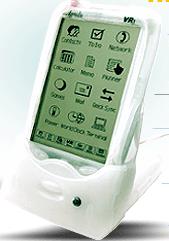Agenda to challenge Palm with “pure Linux PDA”
Mar 10, 2001 — by Rick Lehrbaum — from the LinuxDevices Archive — 4 viewsAgenda Computing plans to be the first company in the world to launch a “pure Linux PDA”, through an April 3, 2001 launch of its VR3 PDA at Comdex Chicago. The VR3 belongs to a new class of PDAs that will compete with Palm's immensely popular products by offering higher performance processors and more sophisticated… operating systems (including Embedded Linux and Windows CE). During the past year, several other companies have announced plans to introduce Linux-based PDAs, including a recent announcement from consumer giant Sharp Electronics. Similarly, G.Mate (Korea) is set due to begin shipping the Yopy PDA shortly.
Another important trend in the Linux-PDA space is the growing number of platform-agnostic PDA Linux distributions. The most notable of these are Century Software's Microwindows environment, Trolltech's QT Palmtop Environment, Transvirtual Technologies' Pocket Linux, and the open source projects of handhelds.org and the Familiar Project.

The VR3 is a full-function PDA with a 160 x 240 pixel (2.25″ x 3.25″ viewable area) backlit LCD. It is based on a 66MHz 32-bit NEC VR4181 “system-on-chip” processor, and has 8 MB of system RAM and up to 8 MB of built-in flash storage. The built-in flash memory prevents data loss due to a discharged battery condition. The device has a standard RS232 serial port plus a special high-speed serial port, along with an IrDA interface. Its operating system is Linux-VR. A LinuxDevices.com “device profile” discussing the VR3 is available here.
The VR3 is being introduced at a suggested list price of $249, and comes in a selection of cool-sounding colors, including “H2O” (transparent), “Shark” (slate blue), and “Matrix” (black).
This article was originally published on LinuxDevices.com and has been donated to the open source community by QuinStreet Inc. Please visit LinuxToday.com for up-to-date news and articles about Linux and open source.